Nothing phone (1) vs. Samsung Galaxy A53
Looking for the best mid-range phone? Start here.
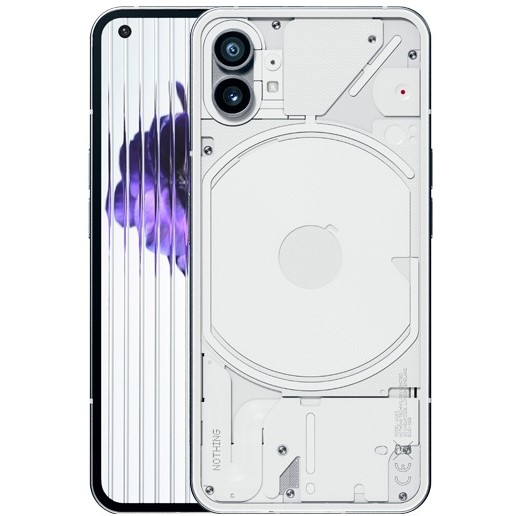
All about that design
The phone (1) has a see-through design at the back that looks rather striking, and it is accentuated by LEDs that light up for notifications and calls. The 120Hz OLED screen is vibrant, the internal hardware is fine for the most part — although you will see the occasional lag — and you get clean software with zero bloatware and a great camera at the back. The battery also lasts over a day with ease, and you get wireless charging here. If you want a stylish mid-ranger that takes good photos and has clutter-free software, this is a great choice.
For
- Striking design with LEDs at the back
- Clean software with no bloatware
- Three Android OS updates
- Great cameras at the back
- Battery lasts more than a day
- Wireless charging
Against
- Laggy in day-to-day use
- Ambient light sensor doesn't work
- No IP67 rating
- No bundled charger
- Not sold in the U.S.
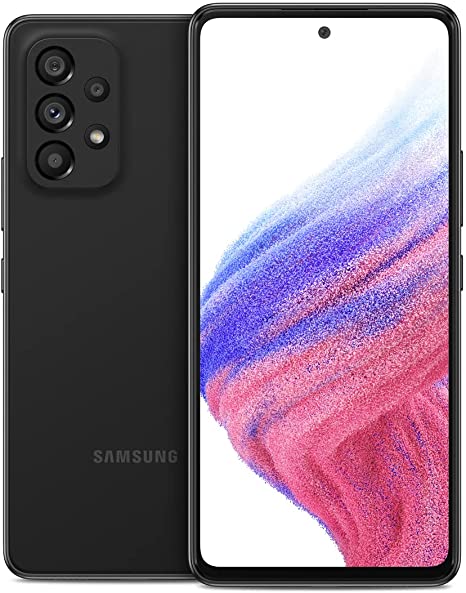
The mainstream choice
The Galaxy A53 continues to be a terrific choice if you're in the market for a new mid-range phone. The phone has a vibrant 120Hz AMOLED screen, decent internal hardware combined with a good camera at the back, and battery that easily lasts more than a day. The best part about the A53 is that it will get four Android OS updates, more than any other Android phone in this category. It doesn't have wireless charging, but you get an IP67 rating, and while the software has some bloatware, you get a lot of useful extras that are missing in the phone (1).
For
- Good 120Hz AMOLED screen
- Decent internal hardware
- Camera takes great photos
- Four guaranteed Android OS updates
- Battery lasts well over a day
- IP67 dust and water resistance
Against
- Not suited for visually demanding games
- No bundled charger
- Missing Wi-Fi 6 connectivity
- No wireless charging
Mid-range phones have gotten really good in recent years, and that's immediately evident when looking at the Nothing phone (1) and the Galaxy A53. Both phones nail the basics, and include a ton of extras that makes a great argument against $1,000 flagships. So if you're looking for a new mid-range phone and are eyeing these two devices, here's what you need to know.
Nothing phone (1) vs. Galaxy A53: Design and screen
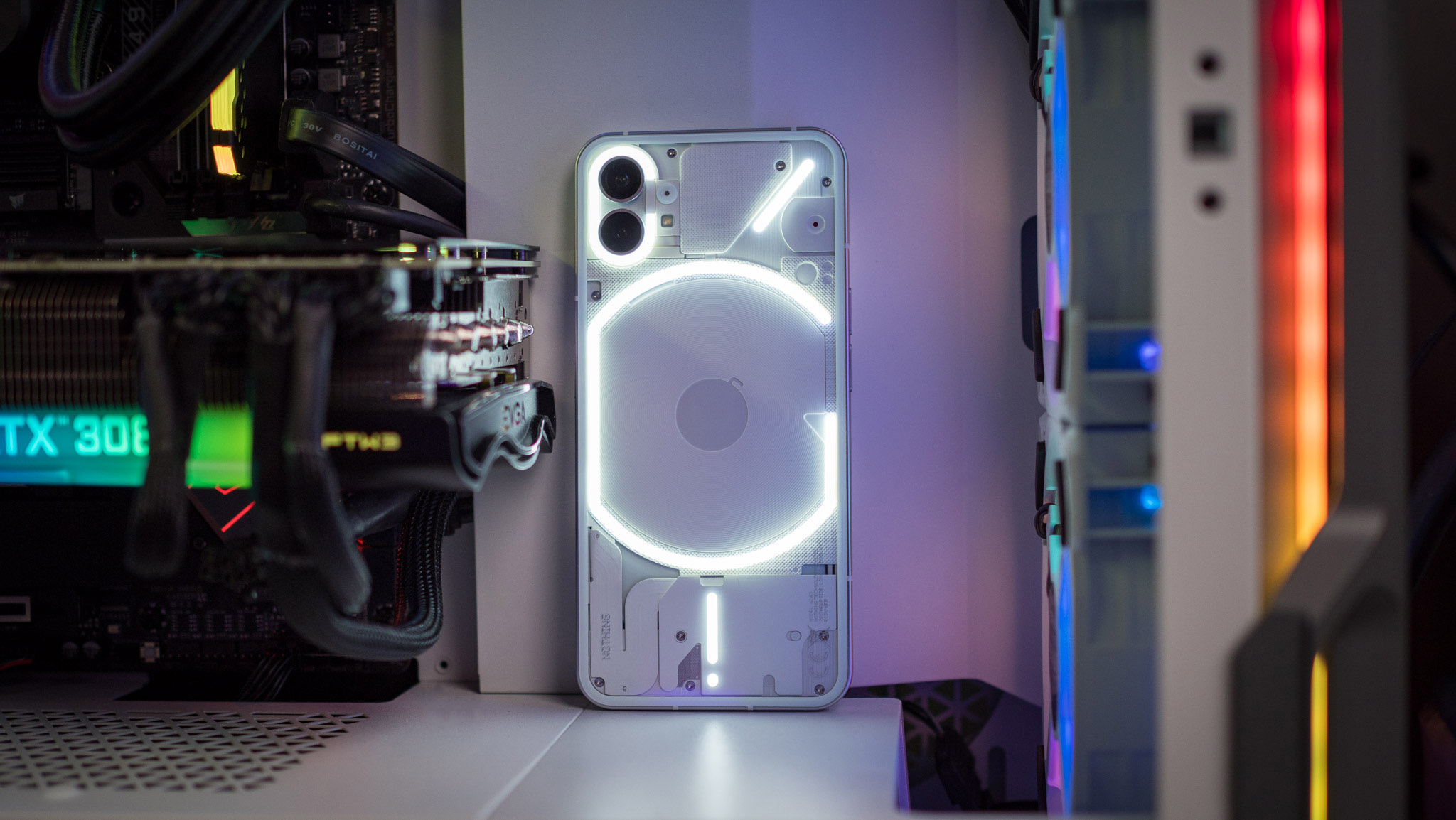
Design is a key part of what makes the Nothing phone (1) stand out, with the phone featuring a unique see-through back that lets gives you a good view of the innards. Nothing did a good job tidying the internal hardware, and as an added bonus, you get LEDs at the back that work with incoming notifications and calls, and as a fill light when using the back cameras.
The phone (1) is the best-looking mid-range phone in the market today.
All in all, the phone (1) looks better than just about any other mid-range phone today, and that see-through design is sure to turn heads. I also like the in-hand feel of the phone (1) because of the aluminum mid-frame; it gives the device a nice heft and makes it feel that much more premium.
The usefulness of the LEDs at the back is questionable as they're only relevant if you put the phone facedown on a surface. Then there's the fact that there's no inherent customization available; you can't set custom patterns for notifications or ringtones. In my use, the most utility I got was as a fill light option in low-light shooting situations — in this setting, the LEDs come into their own.
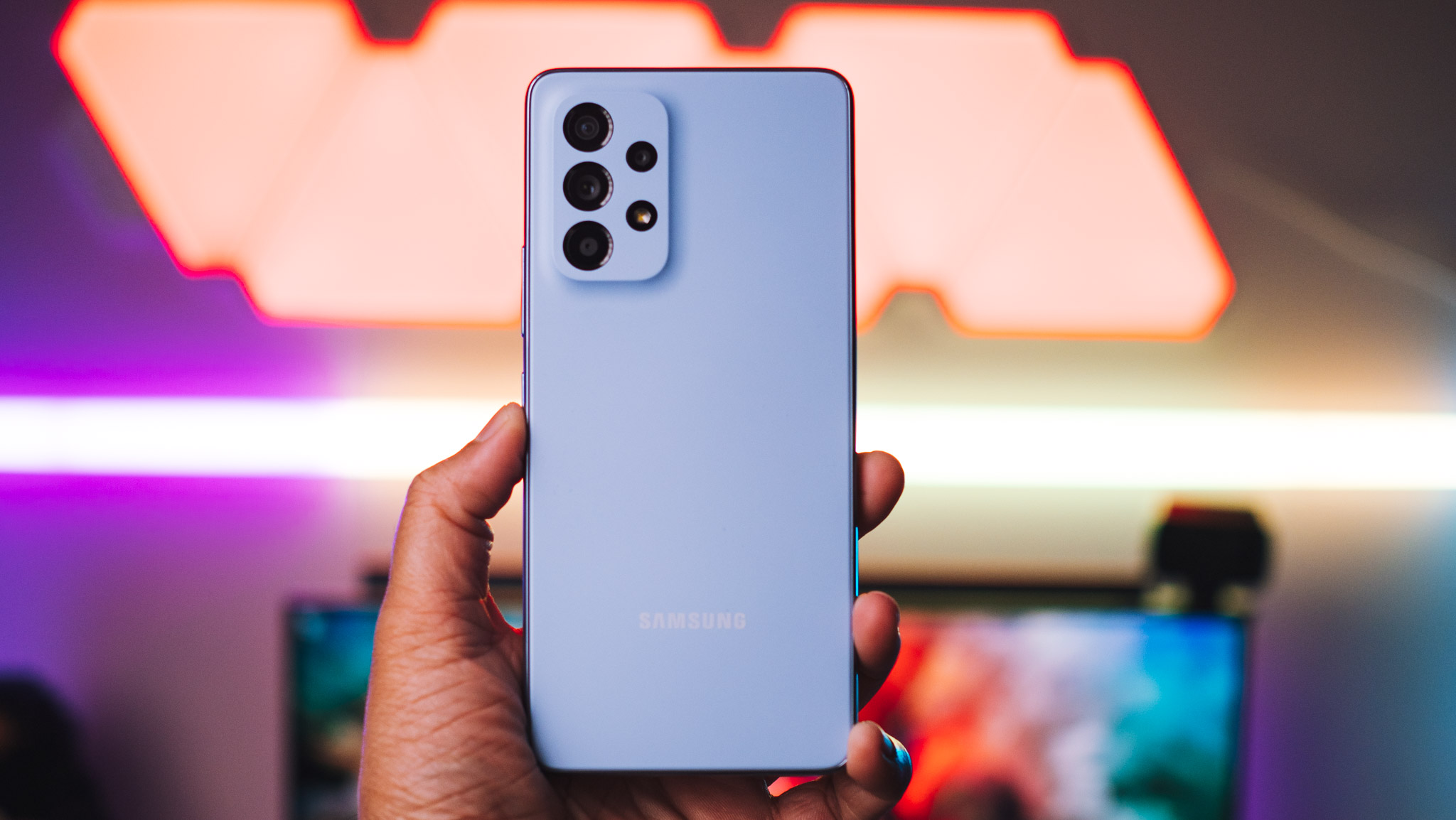
As for the Galaxy A53, Samsung went with a similar design language as previous years that involves pastel colors with a matte finish at the back. While the pastel colors look good, the polycarbonate back doesn't feel quite as premium as the glass back on the phone (1), and in a similar vein, the chrome accents around the mid-frame don't scream elegance either.
Both phones have roughly the same dimensions and have flat sides, but the phone (1) feels much better to hold because of the premium materials used — it takes the deserved victory thanks to its distinctive design and materials. The phone (1) has Gorilla Glass 5 covering the front and rear panes of glass, and the Galaxy A53 also has the same Gorilla Glass layer, just at the front.
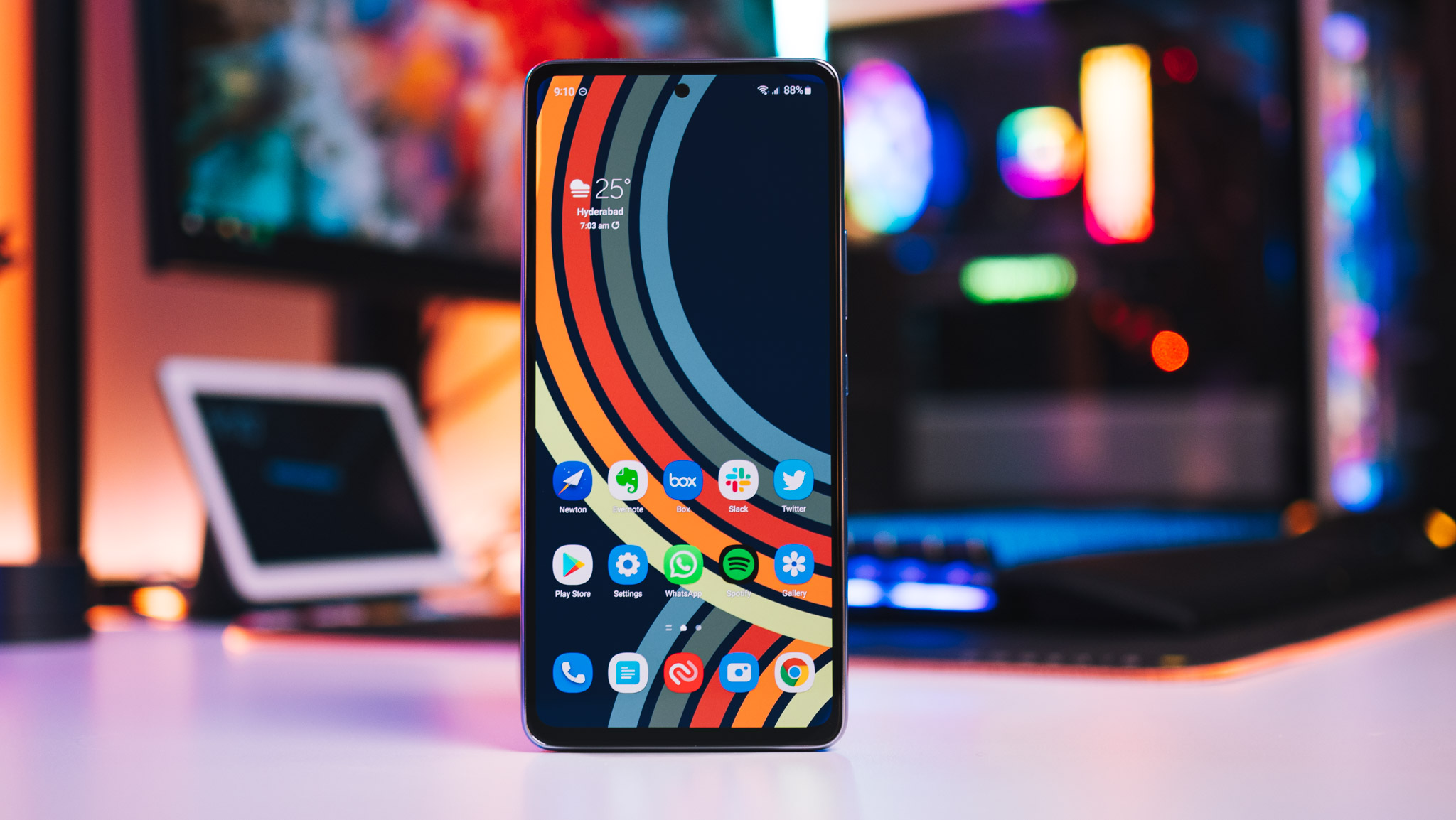
Switching over to the screen, the phone (1) has uniform bezels thanks to a flexible OLED panel, and it looks quite good. The panel itself has 120Hz refresh, and while there isn't much in the way of customizability here, you get decent colors out of the box. The screen gets sufficiently bright in outdoor use as well, but it is found lacking in a few areas.
The phone (1) has a flexible OLED panel with uniform bezels, but it is found lacking in a few areas.
For one thing, the ambient light sensor just doesn't work reliably, and I found several instances where the screen brightness would automatically lower without any change in ambient lighting. This is usually the case while gaming, and it is very irksome. Furthermore, the phone (1) doesn't have an always-on mode, and is the only Android device I can think of that has an OLED screen and doesn't include this particular feature.
Thankfully, you won't find such issues on the Galaxy A53. Samsung knows how to make a great screen, and the 120Hz panel here is vibrant, has excellent viewing angles and contrast levels, and all the extras you want in this category — and yes, that includes an always-on mode with a lot of customizability.
Both devices have stereo sound, and they're great for streaming video. There's no 3.5mm jack on either phone, and that's understandable when looking at the broader industry and its switch to wireless earbuds.
Nothing phone (1) vs. Galaxy A53: Performance
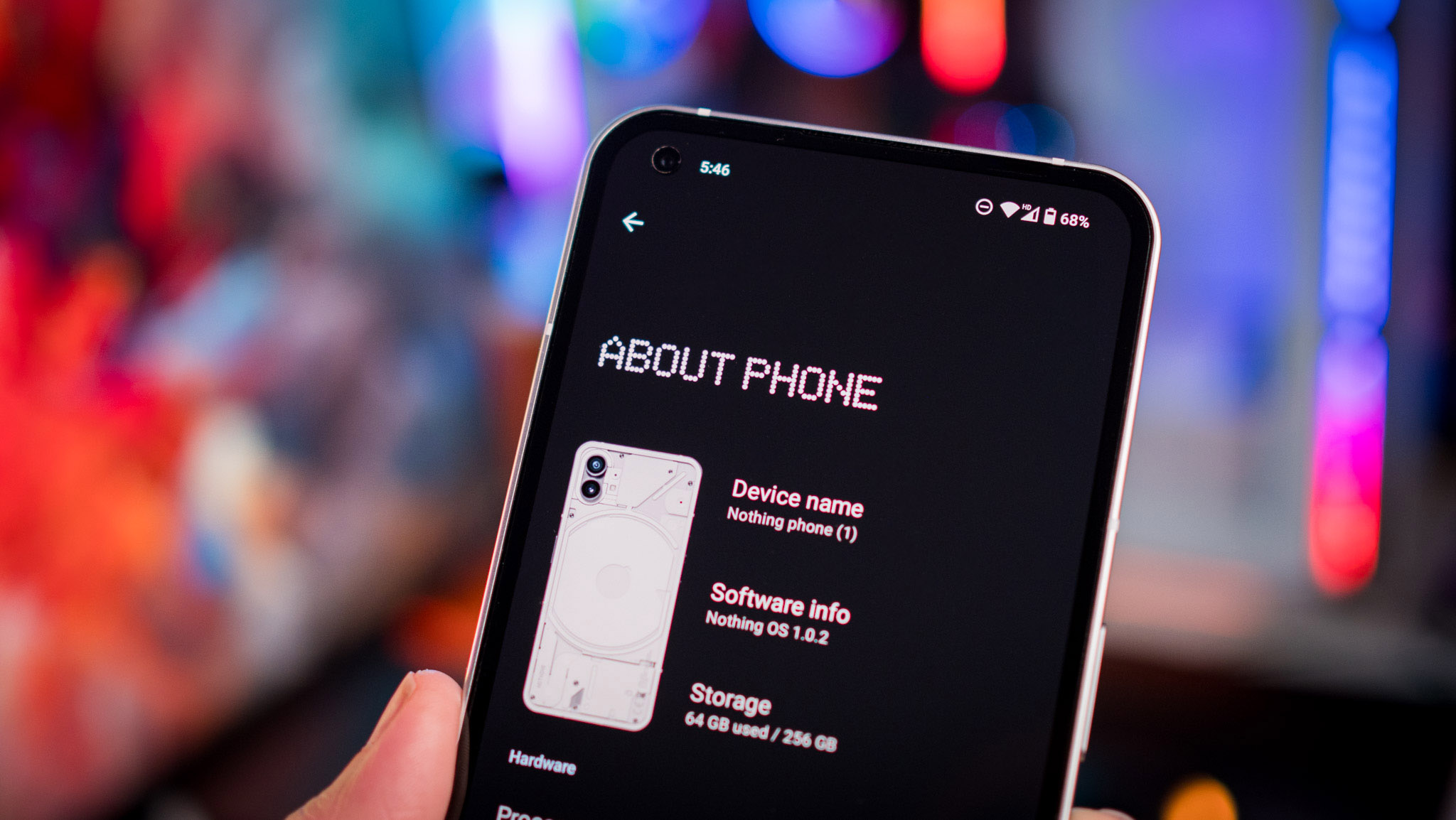
Mid-range phones have reliable hardware that's more than adequate for day-to-day use, and that's in line with what you get on the phone (1) and Galaxy A53. Both devices feature a similar caliber of hardware, and while they have a lot to offer, what's immediately clear is that neither phone is designed for gaming.
Neither phone is built with gaming in mind, and the phone (1) tends to lag in day-to-day use.
Both phones do a decent enough job with gaming in general, but if you're looking to play visually demanding titles, you'll notice a lot of lag and jitter. The phone (1) uses Qualcomm's 6nm Snapdragon 778G+ with four Cortex A78 cores and four Cortex A55 cores, with a single A78 core going up to 2.5GHz and the other three hitting 2.4GHz. The energy-efficient A55 cores go up to 1.8GHz, and overall, this is a reliable package that has been used in a lot of mid-range phones to date.
Samsung switched up its strategy this year with the Galaxy A53, offering the Exynos 1280 as standard in all global markets. The Exynos 1280 is nearly identical to Qualcomm's offering in this category, featuring the same Cortex A78 and A55 cores. The A78 cores go up to 2.4GHz and the A55 cores hit 2.0GHz, and there's a Mali-G68 that rounds things out for gaming.
| Category | Nothing phone (1) | Galaxy A53 |
|---|---|---|
| CrossMark (Overall) | 747 | 542 |
| Productivity | 793 | 592 |
| Creativity | 657 | 482 |
| Responsiveness | 918 | 588 |
| Geekbench 5.1 (single-core) | 821 | 744 |
| Geekbench 5.1 (multi-core) | 2915 | 1929 |
| 3DMark Wild Life (score) | 2579 | 2335 |
| 3DMark Wild Life (FPS) | 15.4 | 14.02 |
| 3DMark Wild Life Extreme (score) | 698 | 641 |
| 3DMark Wild Life Extreme (FPS) | 4.2 | 3.8 |
As is evident with the scores, the phone (1) fares better in single- and multi-core workloads across the board, and it has a slight edge for gaming as well. However, that doesn't translate in real-world usage scenarios; I noticed lag when navigating the interface and scrolling through long-form content or the Play Store, and it's clear that the phone hasn't been optimized for the hardware. I used the Xiaomi 12 Lite before switching to the phone (1), and it didn't have any of these issues even though it has the same internal hardware.
For its part, the Galaxy A53 does a slightly better job, and while I wouldn't suggest it for gaming, it doesn't have any noticeable lag in day-to-day use. That was the case when I got started with the A53 earlier this year, but I don't see any slowdowns when navigating the UI, browsing in Chrome, or going through Twitter or Instagram.
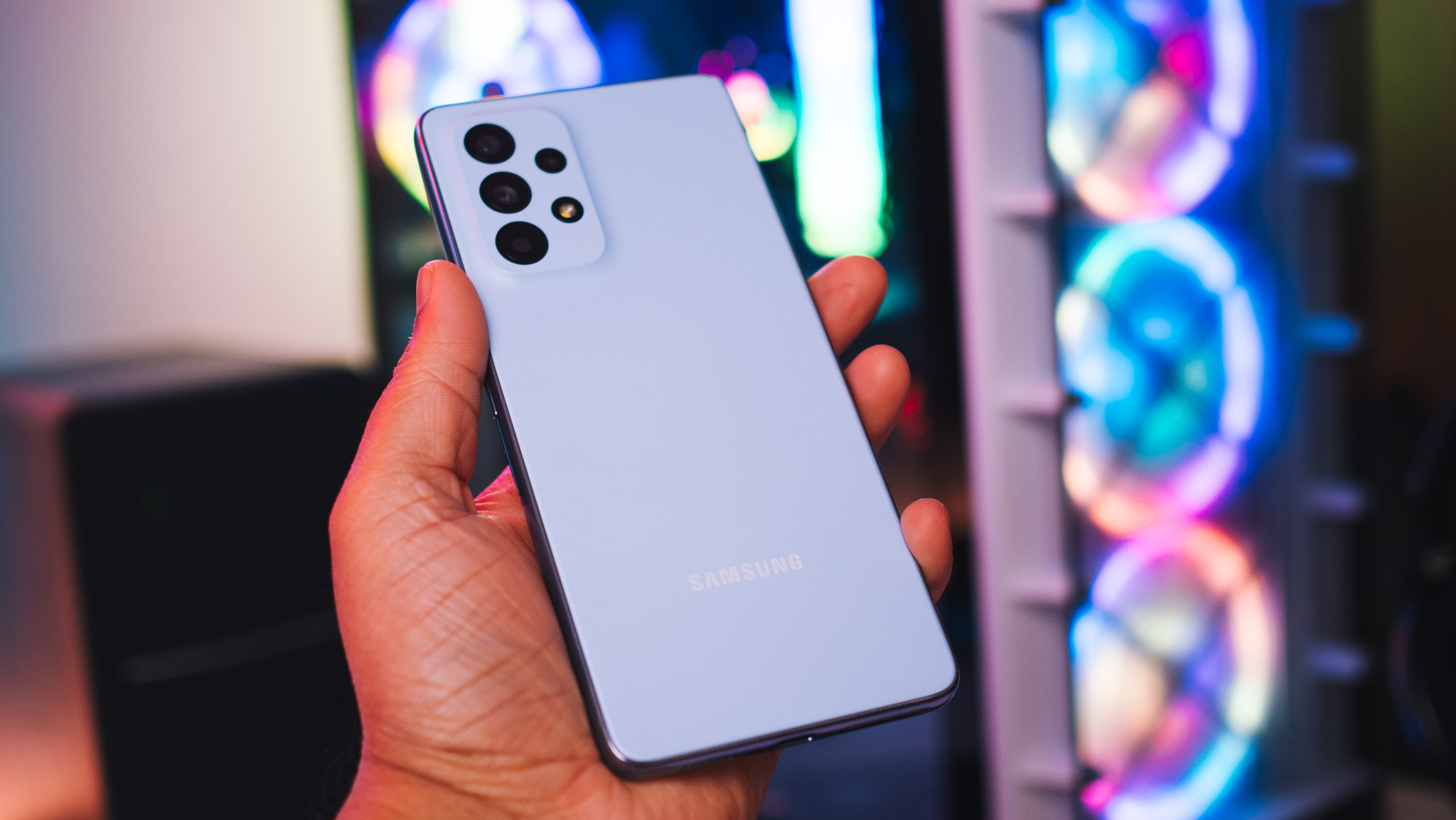
As for storage, both phones go up to 256GB, with the phone (1) getting a 12GB RAM option while the Galaxy A53 maxes out at 8GB. That's more than adequate for Android in 2022, and using the 8GB/128GB of the A53, I didn't feel like there were any bottlenecks in this area. On that note, the A53 has a MicroSD card slot, while the phone (1) does not.
The phone (1) stands out because of wireless charging, but the Galaxy A53 lasts longer on a full charge.
For connectivity, the phone (1) has Wi-Fi 6 and Bluetooth 5.2, with the Galaxy A53 limited to Wi-Fi ac and Bluetooth 5.1. This isn't a huge deal, but given the category the A53 is aimed at, it feels shortsighted of Samsung to not include Wi-Fi 6 as standard. Both phones have Sub-6 5G as standard, with bands varying based on the region.
But the Galaxy A53 redeems itself in terms of biometrics. The phone has an in-screen reader that is reliable to use and fast to authenticate, and I didn't have any issues in this area. The in-screen sensor on the phone (1) takes a little longer to authenticate, and it serves up more errors. And while the device has face recognition, you're better off not using it — I haven't gotten it to work to any reliable degree.
Both phones have large batteries that last over a day. The phone (1) has a 4500mAh battery and comes with 33W fast charging along with 15W wireless charging over Qi and 5W reverse wireless charging. The A53, meanwhile, has a larger 5000mAh battery that delivers better battery figures, but it's limited to 25W fast charging, and there's no wireless charging here.
Of the two, the Galaxy A53 has a slender edge in this area thanks to the larger battery and One UI's battery management. That said, if you want extras like wireless charging, the phone (1) is the only game in town.
Nothing phone (1) vs. Galaxy A53: Cameras
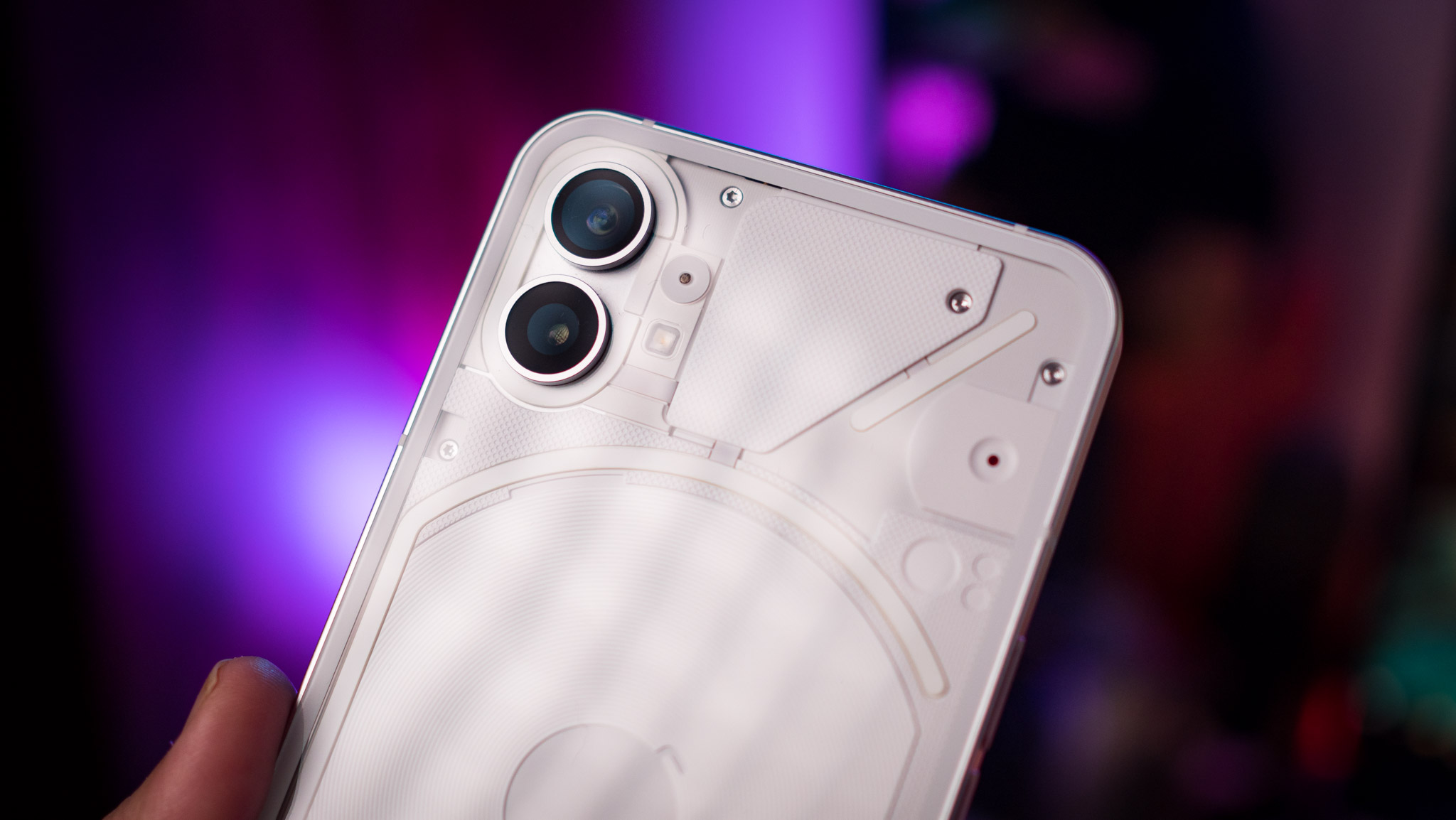
Focusing on the camera side of things for a second, both phones have good sensors and take passable photos in any scenario. The phone (1) comes with Sony's 50MP IMX766 with OIS — a mainstay on the best Android phones — and you get a secondary 50MP wide-angle lens. Samsung offers the same 64MP camera with OIS that was on the Galaxy A52 last year, and you get a 12MP wide-angle lens, and dual 5MP lenses.
The phone (1) outshines the Galaxy A53 in this area.
Although the phone (1) has just two sensors, you're getting two usable cameras here, while I'd argue that Samsung has just the one — the 64MP shooter. This is evident in the resultant photos, with the phone (1) delivering better color vibrancy and details in daylight and low-light situations. The Galaxy A53 produces photos that are very saturated, but it misses out on finer details in scenarios with little to no lighting.
Of the two devices here, the phone (1) does a better job on the camera front, and while there's still areas where the camera needs further tuning, there's no denying that you get usable shots more often than the Galaxy A53.
Nothing phone (1) vs. Galaxy A53: Software
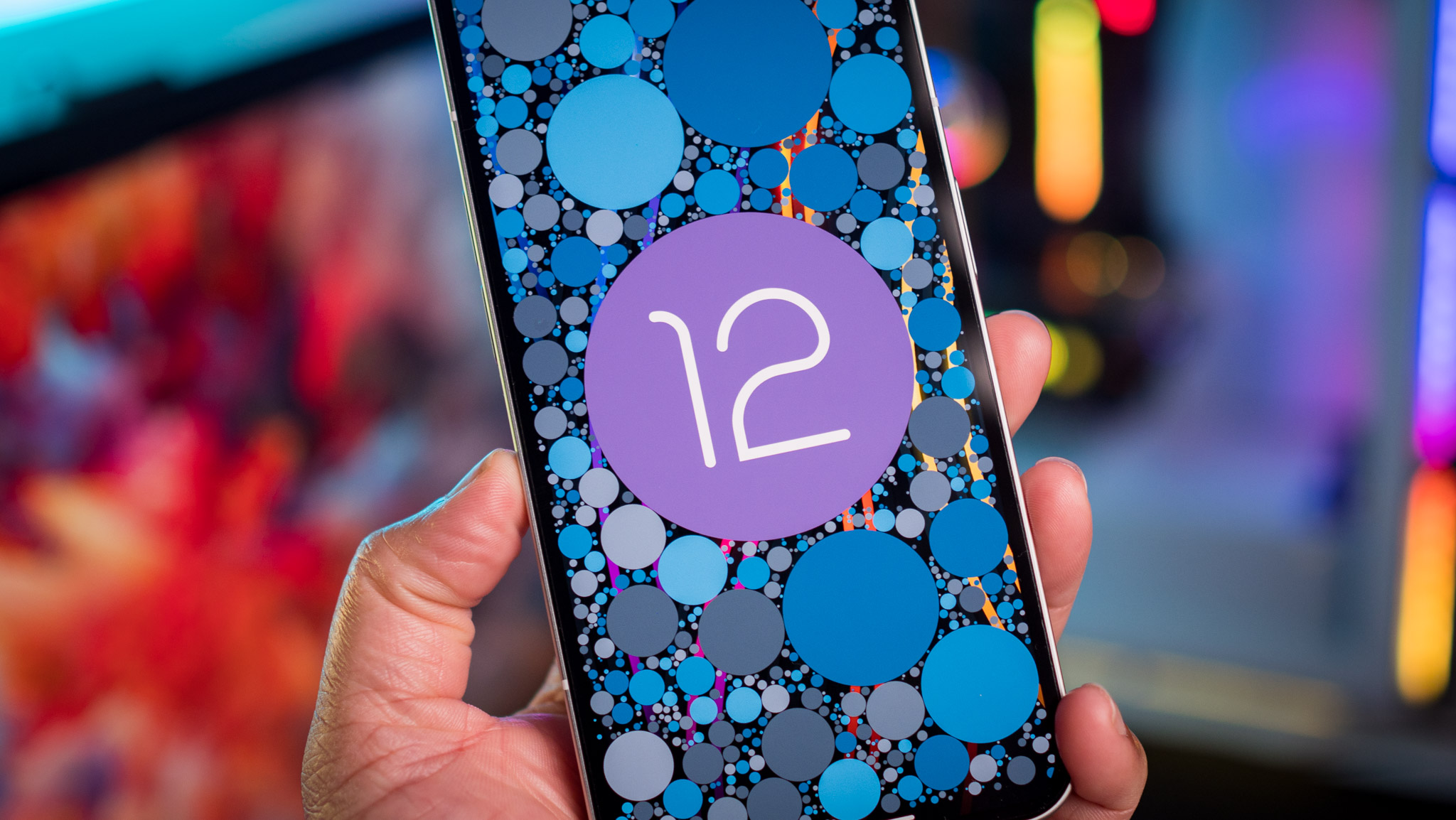
While both phones have nearly identical hardware, the same isn't true of the software. The phone (1) runs Nothing OS 1.0.2 based on Android 12, and the interface is akin to Android One; it is a vanilla Android skin without any extraneous customization. The Galaxy A53 runs One UI 4.1 based on Android 12 out of the box, with Samsung offering more features than you'll end up using.
Nothing has nailed the software: the phone (1) has a clean UI with zero bloatware, and three Android OS updates.
I like what Nothing has done on the software side of things, and by going with an uncluttered UI, it is catering to an audience that wants a minimal interface without any overt customization. That said, it is distinctly short on additional features, and it feels barebones at the moment.
While One UI has a lot to offer, it still has too much bloatware for my liking, and Samsung continues to deliver push notification ads. There are a lot of great features within One UI, and if you're using a Samsung phone, you will feel familiar here. But there's the fact that you will have to uninstall or disable bloatware once you set up the phone.
As for software updates, Samsung continues to lead the pack; the Galaxy A53 will get four guaranteed Android OS updates and five years of security updates, with the phone (1) slated to get three Android OS updates and four years of security updates. Samsung rolls out security updates monthly — and is the only manufacturer to do so in this category — while Nothing says it will deliver bi-monthly updates. If you want a phone that will get long-term software updates, the Galaxy A53 continues to be the one to beat.
Nothing phone (1) vs. Galaxy A53: Which should you buy?

Ultimately, choosing between the phone (1) and Galaxy A53 comes down to what you're looking for in a phone. The phone (1) is the best-looking mid-range phone by a long margin, and it has good cameras, a clean interface with zero bloatware, and battery that lasts over a day.
If you want a Pixel-like UI and a design that will turn heads, get the phone (1). If you're already using a Samsung phone, the Galaxy A53 is the obvious choice.
That said, it misses out on a lot of software features, and there are hardware problems that need to be worked out — in that sense, it's a lot like a Pixel. Of course, the biggest issue with the phone (1) is global availability — the device isn't sold officially in North America.
If you don't want to deal with such issues, the Galaxy A53 has rock-solid stability, and I didn't run into any hardware drawbacks. The phone has a vibrant 120Hz AMOLED screen, hardware that's reliable in daily use, good camera at the back, battery that easily lasts a day and a half, and plenty of useful software features.
The downside is that the design doesn't feel quite as premium, and the software has a lot of bloatware. If you're okay with those trade-offs, the Galaxy A53 is a great overall choice.
Considering the phone (1) is its first showing, Nothing got a lot right. If you want a stylish phone that nails the basics and has a clean software, you'll like what the phone (1) has to offer. But if you want a reliable option that is ideally suited for long-term use, the Galaxy A53 is the one to get.

All about that design
The phone (1) combines a gorgeous design with LEDs at the back, and it delivers the basics: good hardware, great cameras, excellent battery life, clean software with no bloatware, and wireless charging. There are kinks that need to be worked out here, but as a first effort, this is a strong showing.

The mainstream choice
The Galaxy A53 is the safe bet, with Samsung not changing too much over its predecessor. That said, you still get a great 120Hz AMOLED screen, decent internals, good camera at the back, multi-day battery life, and more software updates than any other phone in this category.
Be an expert in 5 minutes
Get the latest news from Android Central, your trusted companion in the world of Android

Harish Jonnalagadda is Android Central's Senior Editor overseeing mobile coverage. In his current role, he leads the site's coverage of Chinese phone brands, networking products, and AV gear. He has been testing phones for over a decade, and has extensive experience in mobile hardware and the global semiconductor industry. Contact him on Twitter at @chunkynerd.
